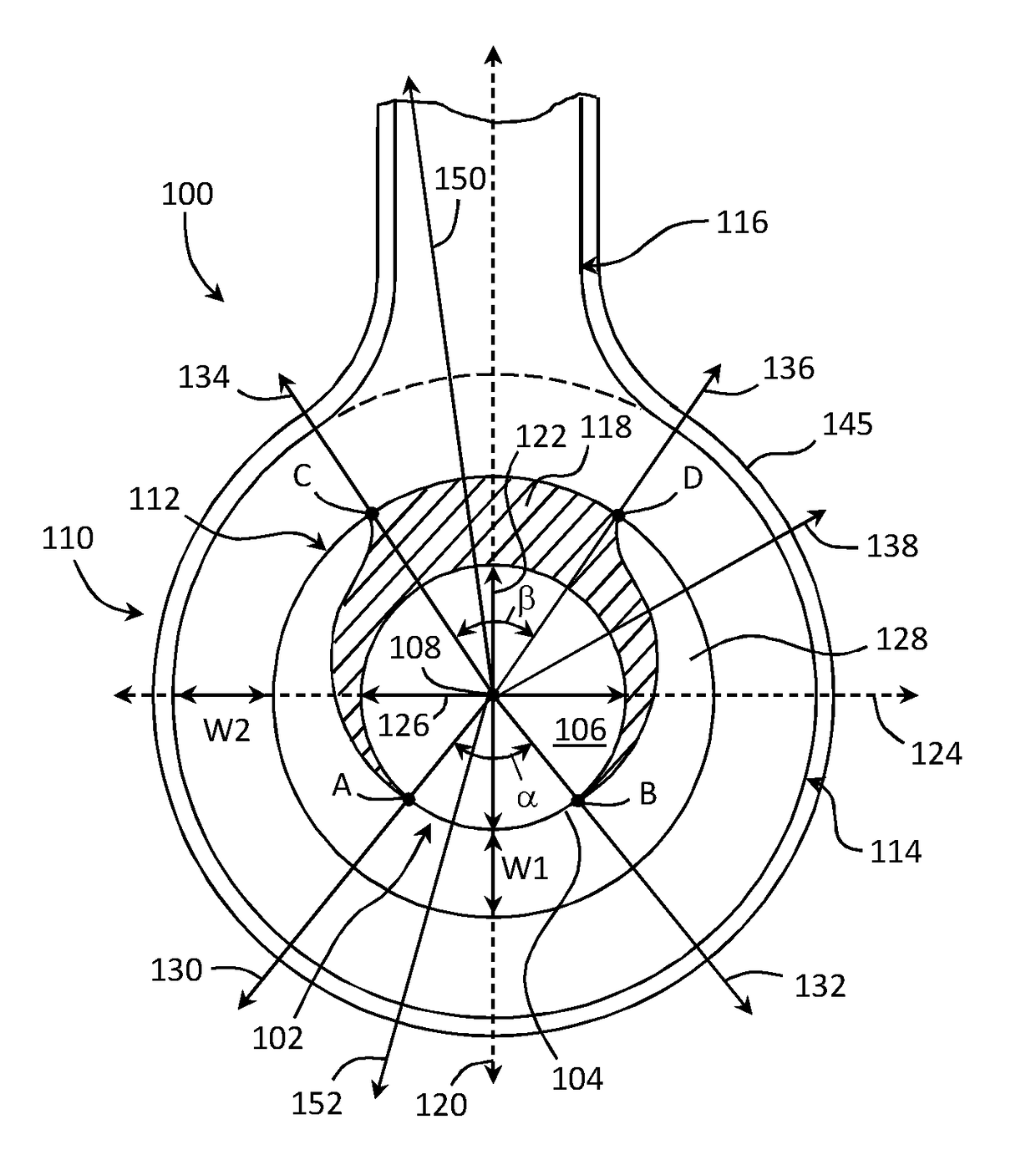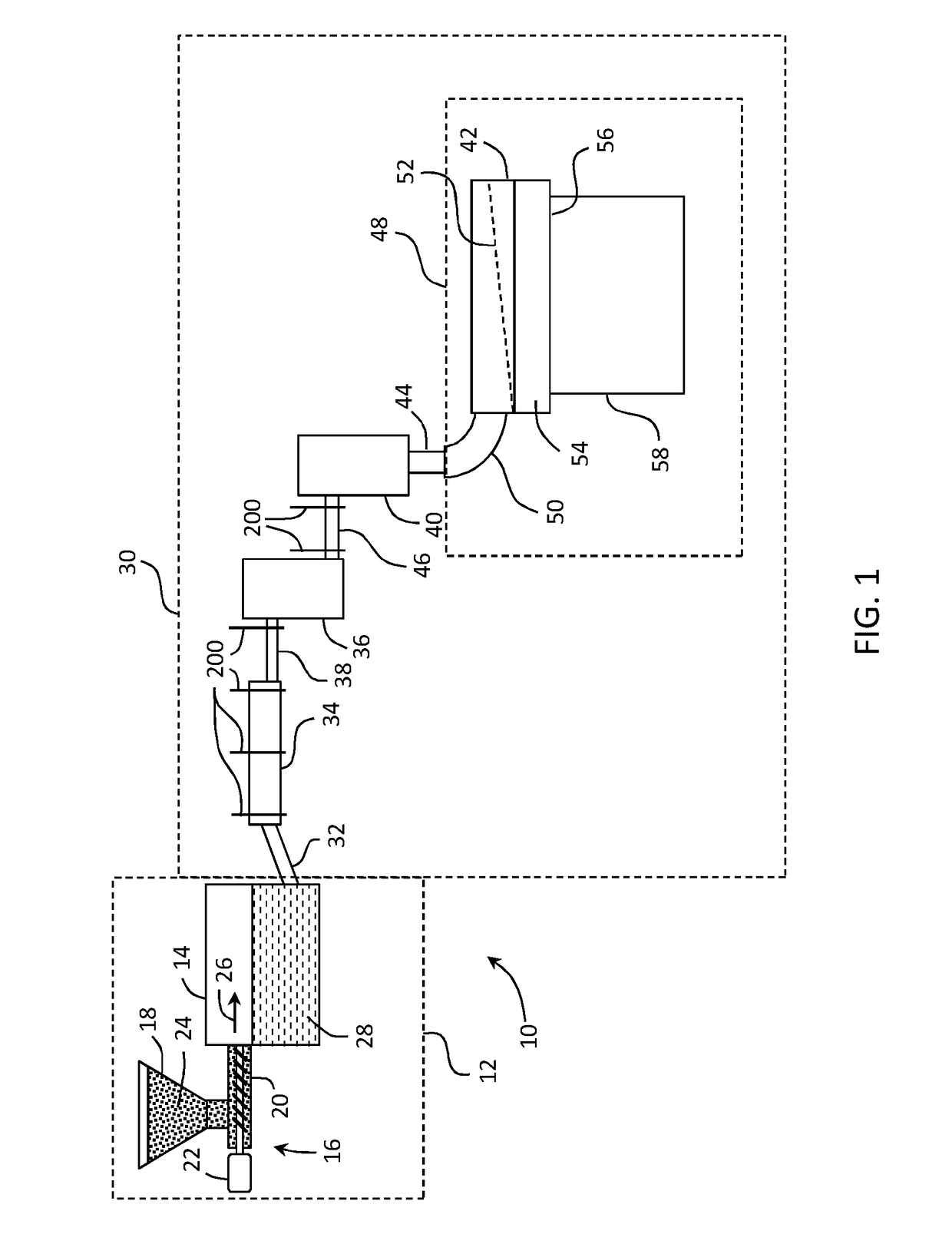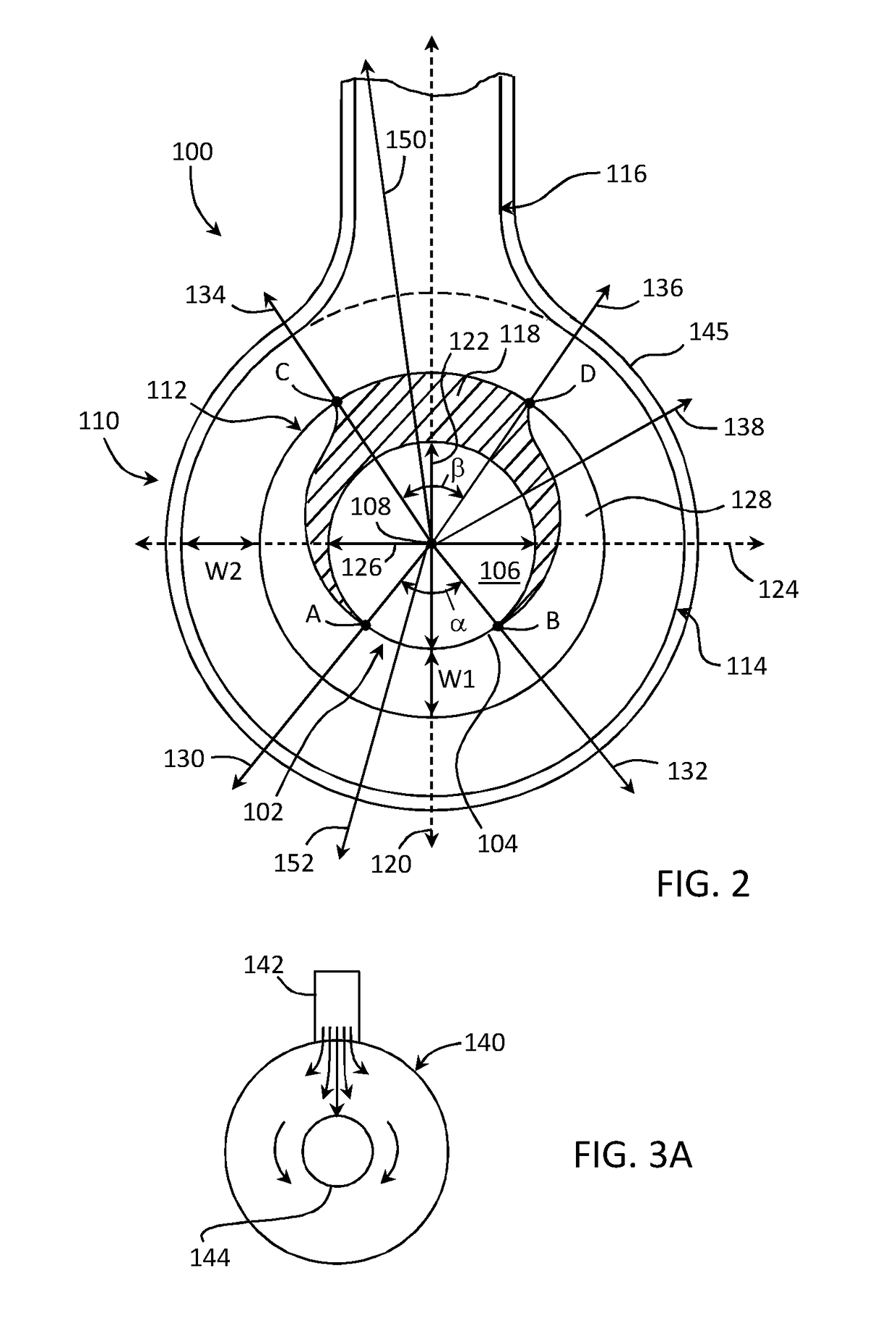Apparatus and method for heating a metallic vessel
a technology for heating apparatuses and metallic vessels, applied in lighting and heating apparatuses, manufacturing tools, furniture, etc., can solve the problems of difficult to achieve with external heating elements, require a greater amount of heat energy, and limit cooling, so as to reduce the electric current
- Summary
- Abstract
- Description
- Claims
- Application Information
AI Technical Summary
Benefits of technology
Problems solved by technology
Method used
Image
Examples
example 1
[0136]Modeling was performed using FLUENT software and software developed for electrical circuit analysis to evaluate an empty (no molten glass) conventional flange 800 shown in FIG. 10, configured for an oblong vessel 802 comprising a wall 804 enclosing an inner volume 806, with a flange design in accordance with the flange of FIG. 4, i.e. flange 200. Vessel wall 804 had a constant thickness of 40 mil (approximately 50.8 cm). Conventional flange 800 included a body portion 808 and an electrode portion 810 extending therefrom. Body portion 808 included a nickel outermost ring 810 with a thickness of 0.5 inches (1.27 cm), and two platinum-rhodium rings of different thickness—an innermost ring 812 with a constant thickness 80 mil (approximately 0.41 cm) and an intermediate ring 814 positioned between the outermost ring 810 and vessel 802 and with a constant thickness of 40 mil (approximately 0.20 cm). Both platinum-rhodium rings 812 and 814 extended completely around vessel 802. The v...
example 2
[0139]FIG. 11 shows modeled current density in flange 800 at three locations along a length of a vessel (conduit) with a supplied electric current of 12,000 amps / mm2 compared with the electric current density for flange 200. The flanges 200 and 800 were again paired with an identical respective flanges on an oblong vessel (conduit) having a minor axis of 9 inches (approximately 22.9 cm) and a major axis of 30 inches (76.2 cm), with a spacing of 60 inches (152.4 cm) between the paired flanges. Current density was calculated at the top of the vessel, at the major axis (edge), and at the bottom of the vessel. Conventional flange 800 included a body portion 808 and an electrode portion 810 extending therefrom. Body portion 808 included a nickel outermost ring 810 with a thickness of 0.5 inches (1.27 cm), and two platinum-rhodium rings of different thickness—an innermost ring 812 with a constant thickness 80 mil (approximately 0.41 cm) and an intermediate ring 814 positioned between the ...
PUM
| Property | Measurement | Unit |
|---|---|---|
| Thickness | aaaaa | aaaaa |
| Shape | aaaaa | aaaaa |
| Perimeter | aaaaa | aaaaa |
Abstract
Description
Claims
Application Information
 Login to View More
Login to View More - R&D
- Intellectual Property
- Life Sciences
- Materials
- Tech Scout
- Unparalleled Data Quality
- Higher Quality Content
- 60% Fewer Hallucinations
Browse by: Latest US Patents, China's latest patents, Technical Efficacy Thesaurus, Application Domain, Technology Topic, Popular Technical Reports.
© 2025 PatSnap. All rights reserved.Legal|Privacy policy|Modern Slavery Act Transparency Statement|Sitemap|About US| Contact US: help@patsnap.com



